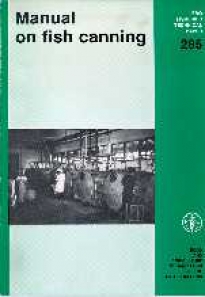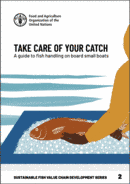Services and Infrastructure for Canning
Key services and infrastructure for reducing food loss and waste (FLW) associated with canning include:
- Supply of large volumes of good quality raw material e.g. small pelagics, tuna, salmon
- Road and modern transport infrastructure
- Energy (electricity)
- Clean water
- Cold storage capacity
- Food safety control
- Canning equipment suppliers
- Waste utilization service providers such as fish meal plants, biogas producers, composting businesses, pharmaceutical industries
- Refrigeration equipment supply and servicing
- Packaging/containers (e.g. cans)
- Final product distributors
Fishmeal and Oil Production
Fishmeal and Oil Production
The major outlet for fish waste is fishmeal and oil production. Only small quantities of fish waste are currently utilized for other purposes, such as pet food, animal feed, fishing bait, etc. In some areas of the UK, fish waste primarily ends up in landfill sites. Fishmeal and oil production, however, requires considerable investment and there are significant economies of scale. Fishmeal and oil are produced world-wide and are traded internationally as commodities. There are currently three specialist plants in the UK which take fish for the commercial production of fishmeal and oil at Grimsby, Aberdeen and Shetland. These plants are under common ownership. Processors can only send waste material to these plants if they have passed a factory inspection and adhere to certain quality and supply conditions.
Morocco Sardine Canning
Morocco Sardine Canning
As highlighted in a study on the Morocco canned sardine production, fishing sector processors will benefit from developing vertical collaborations according to the value chain-based approach. This type of organization requires the competent authority to undertake a great deal of promotion and sensitization efforts. It will also: i) build on the efforts of all actors in order to promote the chain; ii) minimize value losses at post-harvest segments; iii) help to create a culture of business networking to improve their positioning in the global value chain and withstand international competition.
Key Publications
The manual provides a background to the principles of canning and to the specification and construction of containers for the sterilization of fishery products. | |
By-products of tuna processing The tuna loin and canning industry generates a considerable amount of by-products. As the utilization of these by-products varies in different geographical regions, this publication explores utilization from Asia, Europe and Latin America. | |
Moroccan canned sardines value chain: governance and value added distribution This study aims to analyse both production and marketing of canned sardines using value chain method. The goal is to quantify the creation of value addition and examine distribution among the different actors within the chain. |
More Resources
More Resources
31 October 2023














